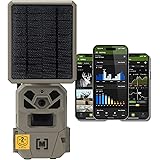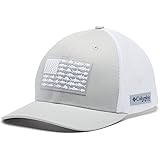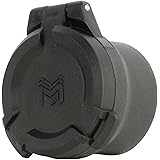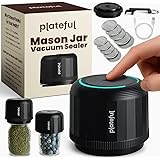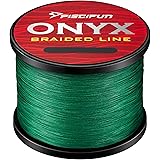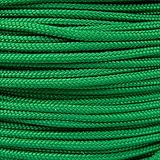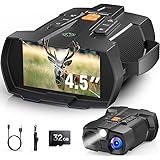Mastering Wilderness Snake Bite Treatment: Essential First Aid and Modern Protocols
Approximately 7,000 to 8,000 people in the United States suffer venomous snake bites each year, underscoring the critical need for accurate first aid knowledge, particularly in remote settings. As explored in the accompanying video featuring Dr. Erickson, navigating the immediate aftermath of a snake bite can be frightening and confusing. Understanding the correct steps to take, while also debunking popular but harmful myths, is paramount for ensuring the best possible outcome when confronted with such a wilderness emergency. Effective wilderness snake bite treatment prioritizes calm action and rapid access to professional medical care.
Immediate Response: Staying Calm and Seeking Help
When a snake bite occurs, the most natural human instinct is often to panic. However, this immediate reaction can actually worsen the situation by increasing heart rate and potentially spreading venom more quickly through the body. The fundamental advice from medical experts, including Dr. Erickson, is to remain as calm as possible after being bitten. Taking deep, measured breaths can help stabilize your physiological response, allowing for clearer decision-making during a stressful event.
It is important to remember that not all snake bites result in envenomation, where venom is actually injected into the victim. Some bites are “dry bites,” meaning the snake strikes but does not release venom, or the venom does not penetrate the skin effectively. Despite this possibility, every suspected venomous snake bite should be treated as a medical emergency until proven otherwise by a healthcare professional. Your initial calm response allows for a more rational approach to subsequent actions, which are crucial for effective wilderness snake bite treatment.
Once calm, the priority shifts to getting help. If you are with others, instruct them to go for help immediately while you remain still. Lying low and avoiding exertion can significantly slow the spread of venom, reducing the body’s metabolic demand. If alone, use a cellphone to call 911 or emergency services. The primary goal is to reach a medical facility with antivenom as quickly and safely as possible. Imagine if you were to exert yourself heavily; the increased blood flow could potentially accelerate venom distribution, complicating your condition.
Debunking Dangerous Myths: What NOT to Do for Snake Bites
Over the years, numerous cinematic portrayals and outdated first aid books have unfortunately propagated dangerous myths about snake bite treatment. Many of these practices, far from helping, can cause severe harm and delay proper medical care. It is crucial to dispel these misconceptions to ensure appropriate responses in a real-life situation involving a snake bite.
Avoid Cutting and Sucking
The dramatic image of someone cutting into a bite wound and sucking out the venom is a staple of action movies, but it is incredibly harmful. This technique introduces harmful bacteria from the mouth into the wound, leading to a high risk of infection. Furthermore, using a knife or blade to cut into the bite area can sever vital structures such as tendons, nerves, arteries, and veins, resulting in permanent damage to the limb. These actions do more harm than good and should never be attempted. The human body is not designed to expel venom through superficial suction, and any perceived benefits are largely illusory.
The Dangers of Cryotherapy (Cold Application)
Applying ice or cold packs, also known as cryotherapy, is a common first aid response for some insect stings or minor injuries. However, for snake bites, it is strongly discouraged and can be detrimental. Immersing a limb in an ice bath or applying extreme cold can cause tissue damage, frostbite, and restrict blood flow in a way that paradoxically concentrates the venom in the affected area, increasing local tissue destruction. Instead of helping, it intensifies local injury and complicates healing. Many people have tried to use this method, only to find it exacerbates their condition rather than alleviates it.
Rethinking Tourniquets and Constriction Bands
The concept of applying a tourniquet to stop venom spread is another widely misunderstood practice. For typical pit viper bites in regions with accessible medical care, such as the United States, applying a tight tourniquet is generally not recommended. An arterial tourniquet, designed to completely cut off blood flow, can lead to severe tissue damage, limb loss, and a dangerous rush of concentrated venom into the bloodstream once released. The potential for irreversible damage outweighs any perceived benefit, especially given the rapid access to hospitals in most areas.
However, there’s a nuanced discussion around very loose constriction bands, sometimes referred to as lymphatic constrictors. In international settings, particularly for neurotoxic snakes like cobras or kraits where medical facilities might be days away, a very loose band above the bite could theoretically impede lymphatic drainage, slowing the spread of neurotoxins. This is a highly specialized technique, often performed by individuals experienced in specific regional protocols, and it differs significantly from the tight tourniquets many envision. In the US, where emergency services are generally robust, focusing on rapid transport is a far safer and more effective strategy for wilderness snake bite treatment.
The Modern Approach: Antivenom and Hospital Care
The definitive treatment for a venomous snake bite is antivenom, a specialized medication designed to neutralize the venom’s effects. Antivenom is not something that can be safely administered in the wilderness or by untrained individuals; it requires a hospital setting. This essential medication, often derived from the blood of horses or sheep immunized against snake venom, carries a risk of allergic reactions in humans, necessitating careful medical supervision during administration. Therefore, the most critical step in wilderness snake bite treatment is reaching a hospital facility promptly.
Understanding CroFab: Advancements in Antivenom
Modern antivenoms like CroFab represent a significant advancement in snake bite treatment. CroFab is a refined antivenom, meaning it has been processed to reduce the non-venomous proteins that can trigger allergic reactions. This purification makes it safer for patients, significantly lowering the incidence of adverse effects compared to older antivenom formulations. Despite its improved safety profile, CroFab remains a potent medication, necessitating careful administration by medical professionals in a controlled environment.
The cost of antivenom, including CroFab, is substantial. With vials costing approximately $300-$400 each, and multiple vials often required for treatment, the expense can quickly escalate. For example, a severe bite might require 10-20 vials, totaling thousands of dollars. Therefore, antivenom is not given indiscriminately; its administration is reserved for cases with clear evidence of envenomation. Swelling, blistering, systemic effects like nausea or weakness, blood abnormalities, or other signs of total body poisoning indicate the need for antivenom. Ensuring proper and judicious use of antivenom is key to effective wilderness snake bite treatment.
Antivenom Dosing for Children
A crucial point regarding antivenom administration is the dosing for children. It might seem intuitive that a smaller person would require less antivenom, but this is not the case with snake bites. Snakes inject a relatively consistent amount of venom regardless of the victim’s size. Therefore, a child bitten by a snake will typically receive the same amount of antivenom as an adult. This approach reflects the principle of “treating the poison” rather than strictly “treating the patient’s size,” ensuring adequate neutralization of the venom in pediatric cases.
Hospital Observation and Discharge Criteria
Once a patient reaches the emergency department, medical staff will closely monitor for signs of envenomation. For most pit viper bites (e.g., rattlesnakes, cottonmouths), swelling and other symptoms typically manifest within four to six hours. If no swelling or other abnormalities appear within this timeframe, patients can often be safely discharged after approximately six, or possibly up to twelve, hours of observation. This watchful waiting period allows medical professionals to confirm whether envenomation has occurred and if treatment is necessary.
However, some exceptions exist. Mojave rattlesnakes, for instance, possess a venom with both blood toxicity and neurotoxicity, meaning it affects the nervous system. Symptoms from a Mojave rattlesnake bite can have a delayed onset, necessitating a longer observation period, typically 24 hours. Similarly, coral snake bites, though rare and often less immediately dramatic, also carry a risk of neurotoxic effects that can be delayed. If you were bitten by one of these specific snakes, imagine leaving after six hours only for severe neurological symptoms to develop later; thus, extended monitoring is crucial for these types of wilderness snake bite treatments.
Supplementary Measures: Ace Wraps and Ineffective Extractors
While the focus remains on rapid medical transport and antivenom, certain supplementary measures can be considered, and others should be avoided entirely. Understanding these nuances can further refine wilderness snake bite treatment strategies.
The Role of Elastic Compression (Ace Wraps)
Unlike tight tourniquets, elastic compression bandages, such as Ace wraps, can be cautiously applied for gentle lymphatic compression. This method is common in some parts of the world, like Australia, and aims to slow the spread of venom through the lymphatic system without completely cutting off arterial blood flow. If applied correctly—loosely enough to allow a finger to slide underneath—an Ace wrap can offer a sense of proactive first aid and may marginally slow venom absorption, particularly if transport to a hospital is delayed. It also provides comfort to the patient and those assisting them, giving them a feeling of doing something beneficial.
Ineffectiveness of Suction Extractors
Commercial suction devices, like the Sawyer extractor, were once widely promoted and even found in Boy Scout manuals as a means to remove venom. These devices attempt to create suction over the bite site, theoretically pulling venom from the wound. However, extensive animal and human studies have conclusively shown that these extractors are ineffective. They remove negligible amounts of venom, if any, and can even cause additional local tissue damage. Despite their continued presence in some emergency kits, relying on them for wilderness snake bite treatment is misguided and delays seeking proper medical attention. The technology simply does not achieve its intended purpose.
Preventing Bites: The Dangers of Exotic Pet Snakes
Beyond immediate first aid, preventing snake bites, especially from exotic species, is a crucial aspect of safety. The practice of keeping exotic venomous snakes as pets carries immense risks, both for the owner and the broader community. These snakes are often acquired through international trade, removing them from their natural habitats, which raises ethical concerns about animal welfare.
Moreover, bites from exotic snakes are notoriously difficult to treat in the United States. Local hospitals typically lack the specialized antivenoms required for these species, which are often only available in zoos or highly specialized facilities. This scarcity means that an exotic snake bite can quickly become a life-threatening emergency with limited treatment options. People often keep these animals for a “machismo” factor, but the inherent dangers, humane concerns, and lack of readily available antivenom make it a highly irresponsible and perilous endeavor. Avoiding exotic snake ownership is a critical preventative measure for wilderness snake bite treatment strategies.



